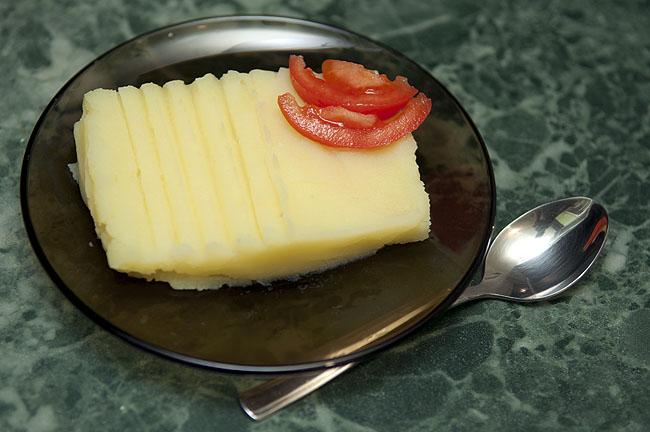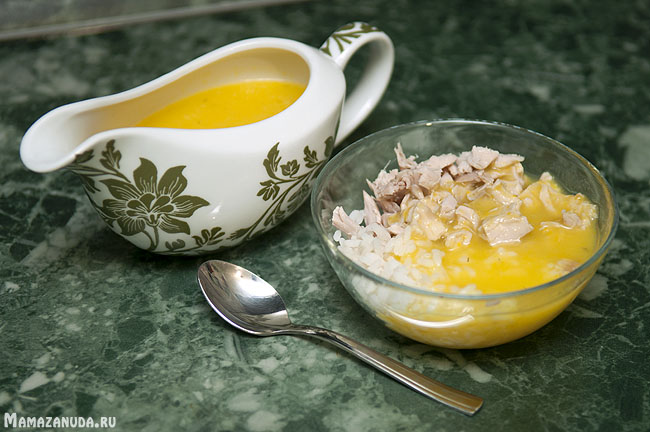Article content:
Parents are looking forward to the onset of 1 year of their child. The baby seems to be crossing at this moment a certain line that separated the unconscious infant period and First stage growing up.
At this point, moms and dads often review the diet of their children, believing that now they can be given any "adult" food. As a result, dishes appear on the feeding table that can cause irreparable harm to a growing organism. To avoid such mistakes, you need to familiarize yourself with the nutritional habits of one-year-old children.
Immutable Rules
The basic principles of feeding babies one year old and older do not change dramatically since the introduction of complementary foods. It is important for parents to treat the nutrition of the crumbs as responsibly as before. Therefore, it is not superfluous to remind, especially to young inexperienced couples, that:
- It is necessary to strictly adhere to the diet of the child.
- should include many full and varied dishes. High-calorie foods should be avoided, as well as excessive sweets for young children.
- All products must be fresh, obtained from trusted suppliers, and properly processed (vegetables and fruits from the store soaked in cold water within a couple of hours; boiled milk; meat and liver boiled or stewed until cooked). Do not feed children food prepared the day before.
- Prepare meals yourself and do not trust advertisements for finished products for children. Recipes home cooking help you eliminate the risk of poisoning your crumbs or an allergic reaction.
- Don't let your baby overeat and eat "heavy" foods before bed.
It would seem that nothing new and difficult. The hardest thing is not to start to disregard these rules over time. Nevertheless, there are some nuances associated with the development of the child's body after a year, which now need to be adopted.
Features of nutrition of a child after a year
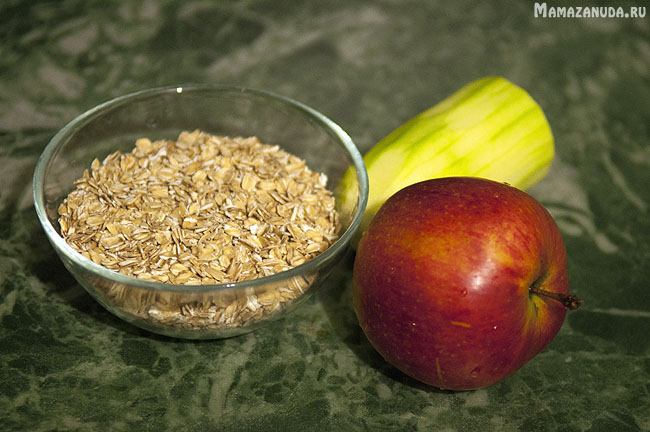
The amount of food the child eats
The daily amount of food needed for children after a year increases: in 1-1.5 years it is 1000-1100 grams, by the age of three - up to 1500 grams. This volume must be divided by 4-5 doses in a day.
It is important to include 200 g of vegetables in the daily diet of a child. The number of potatoes per day should not exceed 120 g. The weekly norm of fish dishes for child 1-2 years (210 g) are divided into 1-2 doses. Hard-boiled chicken eggs or in the form of an omelet can be offered to babies no more than 1 pc. at 2 days. Dishes from peas, beans and other legumes are prepared for children after 1 year 1-2 times in Week. Recipes that include pasta can be used no more than twice a week when made over 2 years old.
In what form to give products
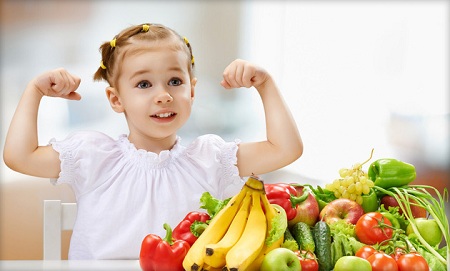
On average, by 12 months, children have 8 milk teeth, which means that it becomes easier for them to chew food. Stewed, boiled or steamed vegetables, which were given to the child in the form of pureed dishes, can now be crushed with a fork.
Fresh vegetables - finely chopped and mixed in the form of a salad. Recipes based on meat products no longer require grinding with a blender. It is better to cook steam cutlets and meatballs, small pieces of which the child will eventually learn to chew on their own.
What foods should be on the menu
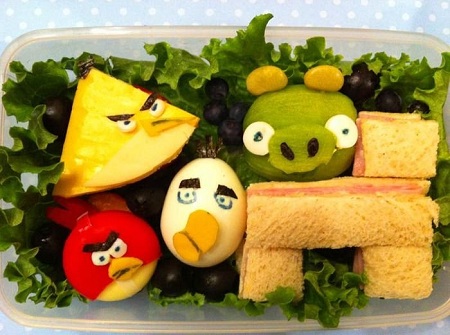
At one year old, the child's ability to digest food increases significantly. The stabilization of the microflora in the intestines of babies older than a year makes it possible to cook multi-component dishes for them, such as vegetable stew and goulash, a variety of soups, berry mousses, and more.
The child may already show his taste preferences or refuse dishes that he does not like. If the little one has become picky about food, do not rush to exclude foods that are important for the development of his body.
Essential sources of energy, vitamins, proteins and fats, as well as trace elements for little man- this:
- Vegetables and greens: zucchini, pumpkin, carrots, potatoes, garden and cauliflower, broccoli, dill, cucumbers and tomatoes, radishes.
- Fruits: apples, pears, bananas, peaches, oranges.
- Berries: raspberries, strawberries, blackberries, black currants.
- Dairy and dairy products.
- Lean meats: turkey, veal, chicken, rabbit, beef, young lamb, lean pork. Children under three years old should not be given goose and duck meat.
- White lean sea fish: pollock, hake, horse mackerel, cod, tuna; river fish - trout.
- Cereals: oatmeal and buckwheat, semolina and corn, peeled rice, wheat and pearl barley.
Forcing children to eat cereals or boiled potatoes that they hate is pointless. Various recipes with identical ingredients will come to the rescue in the preparation of many other dishes that the baby will enjoy.
Dishes for babies in the first years of life
For the first, we suggest you cook the following instead of the usual vegetable soup or soup with meat broth:
Soup with meatballs

History has known fragrant soup with meatballs for hundreds of years. And all because the broth turns out to be saturated, and cute "koloboks" will not leave indifferent any little one. We will slightly improve the recipes known to everyone since childhood.
| Ingredients | Cooking |
| Minced meat - up to 100 g | ž Soak the bread crumb in water or milk. ž Add minced onion, bread, grated on a fine grater. Salt the mass and form meatballs. ž Throw the meat balls into a pot of boiling water and cook for 10 minutes, drain the water and pour boiling water over the meatballs. Add small diced potatoes and carrots to the pot, as well as a few small cabbage florets and some fresh peas. ž After boiling, cook the soup until the vegetables are ready. ž Salt the finished soup, add chopped greens, cover with a lid. |
| Bread - up to 30 g | |
| Potato - 1 pc. | |
| Carrots - ½ pcs. | |
| Onion - ½ pc. | |
| Cauliflower | |
| Green pea | |
| Salt | |
| Greenery |

Crumbs under three years old should not cook rich broths for first courses. If lenten dishes seem not satisfying enough to you, boil the meat separately, and then add it to the finished borscht or soup.
| Ingredients | Cooking |
| Beets - 1 pc. | ž Bring a liter of filtered water to a boil in a saucepan. ž Pour the diced onion into a saucepan, cover it with a lid. ž After 10 minutes, add potatoes cut into medium-sized cubes. ž Grate carrots and beets on a coarse grater and add to the pan after 10 minutes. ž Tomato should be blanched, peeled and cut into cubes. Add it at the moment of boiling along with finely chopped cabbage. ž Pour the sweet pepper in the form of cubes into the pan 3 minutes before the readiness. ž Grind the dill greens, add it to the borscht. ž It is desirable to salt the first dishes at the end of cooking. Stir, let it boil and turn off the gas. ž To make the borscht “leave for“ Hooray! ”, Draw faces, flowers and other patterns with sour cream in a plate with borscht for children. |
| Onion - 1 pc. | |
| Carrot - 1 pc. | |
| Tomato - 1 pc. | |
| Potatoes - 2 pcs. | |
| White cabbage - 100 g | |
| Bulgarian pepper - 1 pc. | |
| Dill | |
| Sour cream | |
| Salt |
For the second baby 1-2 years will like meatballs and fish cakes. For them, as a side dish, cook various vegetable purees (zucchini, potatoes, cauliflower, broccoli), rice or other viscous porridge. If your baby is tired of the taste of ordinary meat steam cutlets, find out interesting recipes from young mothers.
Wind cutlets from turkey and pumpkin
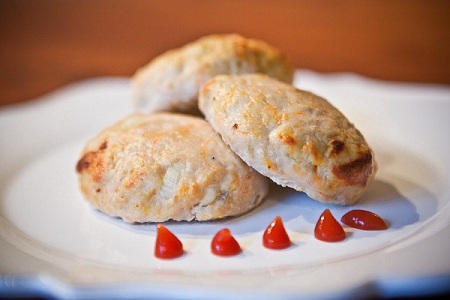
Minced meat for meat dishes is stored in the refrigerator for up to three days, so these cutlets are always fresh and quickly cooked.
| Ingredients | Cooking |
| Turkey fillet - 0.5 kg | ž Lightly beat the meat and cut into cubes half a centimeter wide. ž Grate the pumpkin on a fine grater. ž Grind the onion with a blender. ž Mix meat, pumpkin and onion, add a raw egg and salt to taste. Add breadcrumbs to the mass so that you can mold cutlets. ž Cover a baking sheet with parchment paper, sprinkle with breadcrumbs, put the cutlets and grease them with melted butter. ž Bake in a preheated oven at 180°C for 40 minutes covered with foil and then uncovered for another 20 minutes. |
| Peeled pumpkin - 200 g | |
| Onion - 1 pc. | |
| Chicken egg - 1 pc. | |
| Breadcrumbs for breading | |
| Butter for greasing cutlets | |
| Salt |
Cottage cheese casserole with fruits or berries
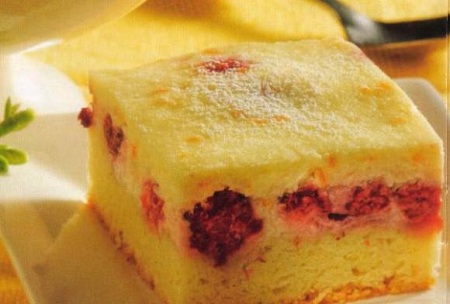
Of course, the nutrition of the child should be healthy, varied and natural. Basically, it consists of cereals and dairy dishes (from yogurt, kefir, cottage cheese). Fried foods are not recommended for children. All vegetable, meat, fish dishes should not be steamed - either in a double boiler or in a water bath. But for the most part children's menu should be vegetables and fruits - both raw and boiled. It is better to cook in a small amount of water. And in no case do not give the child heated food, that is, cook at one time.
Before giving a child something to eat for the first time, you need to make sure in advance that the baby is not allergic to it. And it is desirable to add as little sugar and salt as possible. It is best to do this after a year and a half.
Children over one and a half years old can be given the same food that the whole family eats. But you should not rid him of baby food, because, in general, most products are designed for children older than three years.
The child's meals should be four times a day, and always at the same time of the day, for example: from 8 to 9 in the morning - breakfast; from 12 to 13 - lunch; from 16.00 to 16.30 - afternoon snack; from 20.00 to 20.30 - dinner. It is not recommended to make any snacks (even fruits or berries) between these meals. Even giving drinks (juices, teas, compotes) is also desirable during the main meal. 
Children's nutritionists offer an approximate menu for a child from 1.5 years to 2 years old with recipes for a week.
Monday:
Breakfast is offered: Rice porrige with dried fruits, cottage cheese, bread with butter. And drink tea with milk.
For lunch: Salad of greens and fresh cucumbers, seasoned with vegetable oil, green bean soup, potato zrazy, Rye bread. And to drink - berry juice.
For an afternoon snack: fresh fruits, cookies and a glass of yogurt.
For dinner: turkey cutlets, stewed cabbage, fruit puree and bread. And drink - baby milk.
Tuesday:
Breakfast is offered: semolina in milk with grated carrots, scrambled eggs, bread with butter. And to drink - a rosehip broth.
For lunch: fresh tomato salad seasoned with vegetable oil, fresh cabbage soup, beef meatballs, boiled buckwheat in water, rye bread. And it is recommended to drink juices from freshly squeezed fruits.
For an afternoon snack: biscuits, fresh fruit and drink yogurt.
For dinner: meat casserole with cabbage, cottage cheese and apple pancakes, bread. And drink a glass of yogurt. 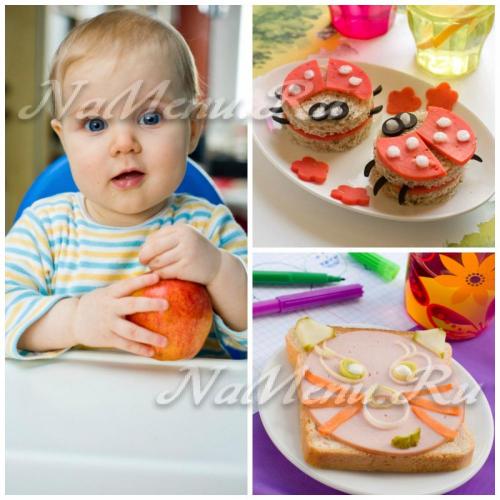
Wednesday:
For breakfast it is recommended: oatmeal with banana, cheese, yogurt, biscuits, and drink baby milk.
For lunch: a salad of greens and fresh white cabbage, seasoned with vegetable oil, chicken noodle soup, finely chopped boiled chicken fillet, mashed cauliflower, rye bread, and drink dried fruit compote.
For dinner: salad with apple and beets, beef meatballs, rice porridge on the water, bread, and drink rosehip broth.
Thursday:
For breakfast: corn porridge in milk with boiled pumpkin, cottage cheese, bread with butter, and drink green tea. What else to cook for breakfast, you will find recipes.
For lunch: Salad of greens, green salad and fresh cucumbers, dressed with vegetable oil, mashed potatoes, lazy cabbage rolls, rye bread. And from drinks you can also fruit juices and dried fruit compote.
For an afternoon snack: Fresh fruit, biscuits, and drink baby milk.
For dinner: fresh tomato salad dressed with fat-free sour cream, finely chopped boiled chicken fillet, broccoli and green peas puree, bread, and a glass of kefir.
Friday:
For breakfast, it is proposed: Porridge from rice or other cereals, with an apple, a soft-boiled egg, bread with butter, and drink a rosehip broth.
For lunch: a salad of greens and fresh white cabbage, seasoned with vegetable oil, lean borscht with red beans, with the addition of fat-free sour cream, potato pudding with rabka, rye bread, and drink berry juice.
For an afternoon snack: biscuits, fresh fruit and kefir.
For dinner: lazy cabbage rolls, cottage cheese pancakes, bread, and drink baby milk. 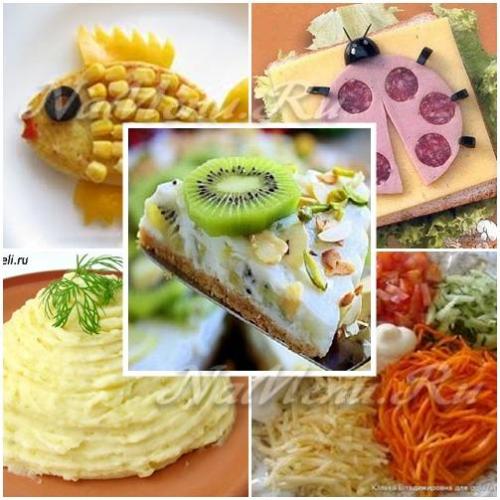
Saturday:
For breakfast: buckwheat porridge with milk, cheesecakes, fruit puree, and drink tea with milk.
For lunch: apple and carrot salad dressed with low-fat sour cream, lean cabbage soup, meatloaf (beef or pork) or minced vegetable, rye bread, and drink dried fruit compote.
For an afternoon snack: a bun, fresh fruit and kefir.
For dinner: sauerkraut, seasoned with vegetable oil, sausages (special for children), mashed potatoes, bread, and drink a rosehip broth.
Sunday:
For breakfast: oatmeal with prunes, cheese, bread with butter, yogurt, and drink green tea.
For lunch: a salad of greens and fresh cabbage, seasoned with vegetable oil, vegetable soup with millet, turkey cutlets, boiled pasta, rye bread and fruit juice.
For an afternoon snack: biscuits, fresh fruit and kefir.
For dinner: vinaigrette, roll of boiled meat and vegetables, bread, and drink baby milk.
Date of: 08.07.2016 / 11:53
I have been asked so many times about my favorite recipes for children's dishes that I already feel obliged to share them.
Behind Last year I got into the habit of daily performing in the kitchen the role of Yulia Vysotskaya from the program “We Eat at Home”. Yana is ready to listen endlessly to my chatter about food processing technology and observe the process. The main thing in this matter is to organize a comfortable place for the viewer, and given the phenomenal perseverance of Yana, this is not at all difficult. For the previous month and a half, in addition to the role of Vysotskaya, I had the opportunity to perform the functions of a photographer. Our camera lived in the kitchen, and I caught good shots of my favorite dishes.
- (useful link and book recommendation)
Menu for a child from 1 year old | Introduction
I really wanted to write for you the very best delicious recipes for kids, but I'm afraid that this did not happen, because I am very demanding on the degree of harmfulness of food. It turned out that I only had a couple of really tasty children's meals in stock, and everything else was basic. healthy meals, which for most may seem tasteless. After thinking, I decided that these useful recipes can also be useful to someone, because my cooking technology is not quite the usual, a little original and intuitive. Now it is fashionable to call the word "author's".
To many, our selection of recipes may seem strange 🙂, so I’ll immediately clarify my views on nutrition - I am of the opinion that animal food is harmful, therefore not a single recipe contains milk. It turned out to be easier for me to eliminate it from the diet than other animal products. Meat, liver, fish and eggs are still present in our diet, but are not a daily necessity. In the compilation you will find some of our favorite recipes, including some of them.
In addition to the usefulness of the dishes, the time that I have to spend on cooking is very important for me. I cook almost everything in the slow cooker. For me it is very convenient. Timed shutdown and automatic modes allow you to press the button and forget about the kitchen. While the pan on the stove literally chains to itself. When cooking on the stove, it is necessary to wait for a certain degree of boiling, then adjust the temperature to maintain it constantly and note the cooking time. In addition, the progressive multicooker allows you to set the temperature.
In the photo for the recipes, I tried to give the dishes an appetizing look, using delicious additions: raisins, green peas, etc. In fact, I only use these supplements when I've been denied food. I also want to add that Yana is small and unwilling, and all the recipes have been repeatedly tested on her.
I also want to note that I don’t add salt and sugar during the cooking process, because I don’t want to accustom Yana to bright tastes. Of course, this will inevitably happen in kindergarten, but let it happen later 😥 . Adults add spices to their plate.
Menu for a child from 1 year old | viscous cereals
In children, unlike adults, the stomach is very susceptible to the consistency of food. In addition to this, Yana has a peculiarity, she does not drink any drinks, even the most delicious and sweet ones. The maximum can take a couple of sips. That is why our entire diet is viscous and liquid. For breakfast, we usually have dairy-free porridge, which I cook in a slow cooker. Yana does not have a very positive attitude towards cereals, but with a handful of raisins the situation evens out. Here are a couple of recipes for cereals with vegetables:
 Dairy-free oatmeal porridge with zucchini
Dairy-free oatmeal porridge with zucchini
This porridge can be introduced already in the first year of life, only in this case it is necessary to peel the apple.
Ingredients:
1 st. long-cooked hercules;
4 tbsp. water;
1 apple;
200 gr zucchini (pumpkin also goes well).
 Cooking:
Cooking:
Three zucchini and an apple on a grater. We put all the ingredients in a slow cooker and cook in milk porridge mode. When serving, add oil.
Serving:
If your baby is unwilling, try to get interested in dried fruits (raisins, dried apricots, etc.).
 Semolina porridge with vegetables
Semolina porridge with vegetables
Ingredients:
- Carrots, beets or pumpkin - 600 gr;
- Semolina - 3-4 tbsp;
- Milk (I add water) - 125 gr;
- Oil 2 tbsp.
Grind vegetables on a grater. Add water and simmer for 15 minutes. Pour semolina in a thin stream and cook for another 5 minutes. When serving, season with oil.
Menu for a child from 1 year old | Soups
For lunch we usually have vegetable soups. Soups, unlike cereals, Yana respects and may even ask for an addition. If you are not a fan of vegetable soups, then you can add meat to any of them.
vegetable soup
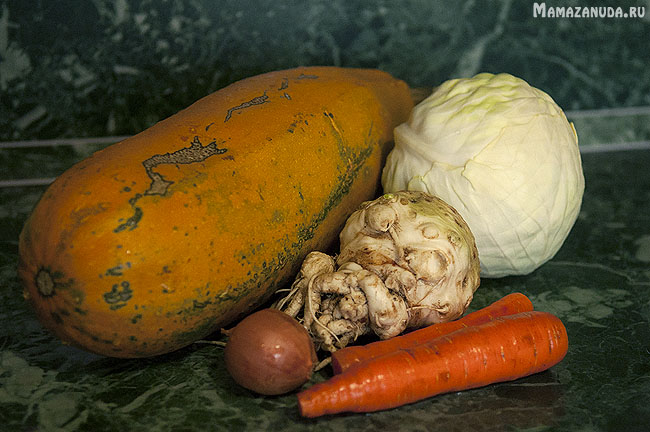
Set of vegetables for soup. Homemade zucchini is not only a real rarity in winter time year, but also a rich source of nutrients!
The easiest way to introduce a stranger into your diet is to add him to your soup! Personally for myself, I discovered that any soup perfectly complements parsnips, celery and parsley root. By the way, zucchini is also great as an ingredient in soup.
So, vegetable soup:
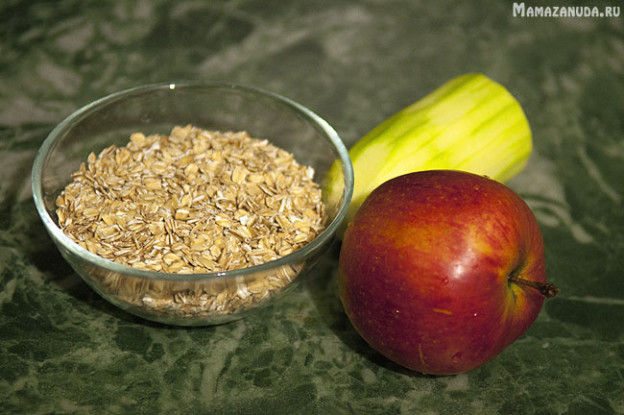 Ingredients:
Ingredients:
Several different fresh vegetables (prefer local ones) in the same proportions, with the exception of spice vegetables (onions, garlic and other vegetables with a rich taste). Vegetables and spices in small quantities. If you want to make the soup more high-calorie, add a handful of cereals (this is true if you are underweight). I took:
- 200 gr. cabbage;
- 200 gr. carrots;
- 200 gr. celery root;
- 200 gr. squash;
- small onion.
- 5 minutes before the end of cooking, add half a teaspoon of dill and a couple of bay leaves.
Cooking:
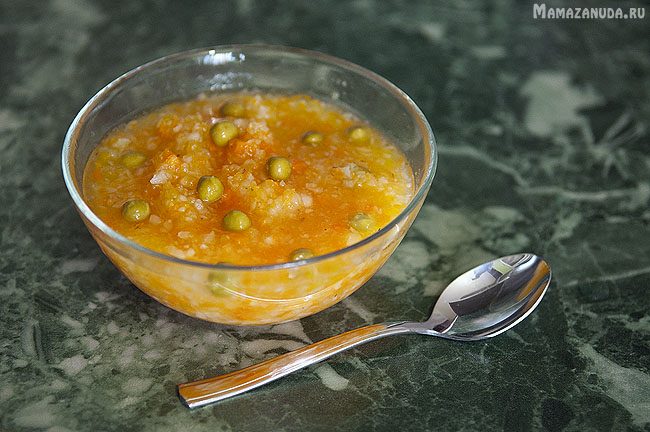 Option 1(the most common): onion, chop cabbage. Carrots, celery three on a grater. Zucchini cut into cubes. Pour all the ingredients with water and cook until tender.
Option 1(the most common): onion, chop cabbage. Carrots, celery three on a grater. Zucchini cut into cubes. Pour all the ingredients with water and cook until tender.
Option 2(how I do it): I cut vegetables into large cubes - about 4x4 cm. I cook in a slow cooker in stewing mode for 1 hour. Grind cooked vegetables with the addition of broth in a blender chopper. I like the grainy consistency that is obtained in this way. The size of the resulting pieces is controlled by the speed and time of grinding. What is important - even cabbage after such grinding is completely placed in the mouth.
Option 3. Puree option - grind everything with a blender. If you do not adhere to vegetarian views, 100 gr. cream will significantly improve the taste (this is knowledge from a past life 🙂).
Serving:
If you do not adhere to vegetarian views, add sour cream, otherwise vegetable oil at the rate of 1 teaspoon per 1 serving.
If a non-hochuha refuses to eat soup, you can try to interest him by adding a spoonful of green peas.
For adults (taking into account our spoiled taste habits): I add salt, a spoonful of tomato paste or half a teaspoon of lemon juice - sourness greatly contributes to the taste of the dish.
Soup of the borscht family
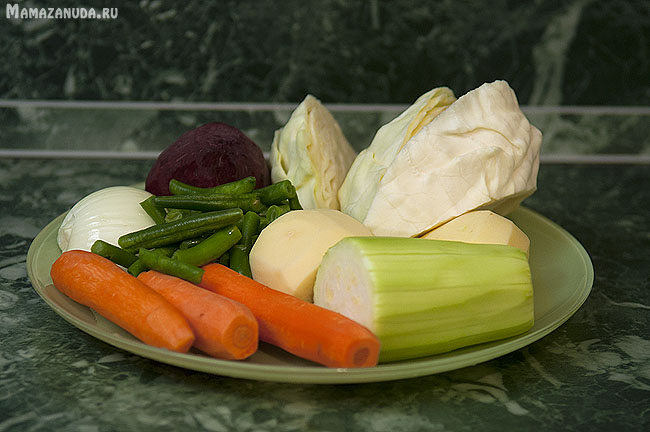 Ingredients:
Ingredients:
Beets and as many other vegetables as possible. I took:
- 200 gr beets;
- 300 gr potatoes;
- 3 00 gr. cabbage;
- 300 gr. carrots;
- 200 gr. string beans;
- 300 gr. squash;
- half an onion.
Option 1(the most common): onion, chop cabbage. Three beets, three carrots on a grater. We cut the beans into pieces 0.5-1 cm long. Pour all the ingredients with water and cook until tender.
Option 2(how I do it): I cut vegetables into large cubes - about 3x3 cm. I cook everything, with the exception of beans, in a slow cooker in stewing mode for 1 hour. Grind cooked vegetables with the addition of broth in a blender chopper. Beans boiled in  double boiler until tender and add to the soup at the serving stage.
double boiler until tender and add to the soup at the serving stage.
Option 3. Puree option - grind everything with a blender.
Serving:
If you do not adhere to vegetarian views, add sour cream, otherwise vegetable oil.
If a non-hochuha refuses to eat soup, you can try to interest him by adding pieces of a boiled egg.
Soup with fish
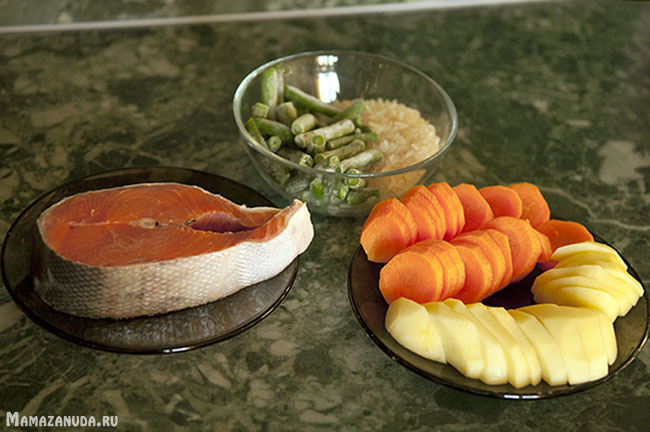 Ingredients:
Ingredients:
- steak of pink salmon, chum salmon or other red fish(I didn’t take into account that red fish is a strong allergen. Since we never had problems with this and this soup is in our adult diet, Yana has been eating it since the year. For moms who are more careful in the diet, it’s better to take white lean fish ( ));
- a couple of medium potatoes;
- a couple of medium carrots;
- a handful of green beans (can be replaced with a bunch of fresh dill);
- 1/3 cup rice (if you have a leftover side dish from a previous meal, you can use it - just add it to the soup at the very end);
- 5 minutes before the end of cooking, do not forget to add half a teaspoon of dill and a couple of bay leaves.
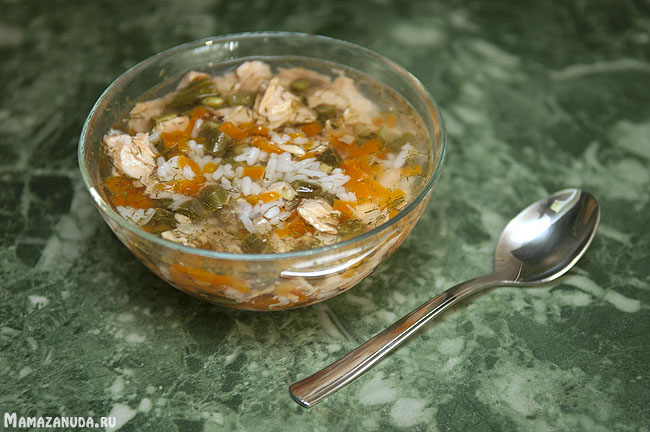 Cooking: cut carrots and potatoes into large pieces (as in the photo), cook in water until tender. It is this vegetable broth that will be used for the soup. In a slow cooker, cook rice as a side dish along with fish and beans (we steam fish and beans). When everything is cooked, we combine in a separate pan:
Cooking: cut carrots and potatoes into large pieces (as in the photo), cook in water until tender. It is this vegetable broth that will be used for the soup. In a slow cooker, cook rice as a side dish along with fish and beans (we steam fish and beans). When everything is cooked, we combine in a separate pan:

Puree option: this soup is also very good mashed. In this case, it is better to increase the amount of green ingredients (beans or fresh dill) or reduce the amount of carrots, otherwise the color will not be as beautiful as in the photo.
Menu for a child from 1 year old | side dishes
Our favorite side dishes:
- Viscous buckwheat porridge cooked on water from green buckwheat (I cook in a slow cooker on the “milk porridge” mode. Proportions: 1 tbsp. cereals - 4 tbsp. water.). In general, at this age, you can already give crumbly cereals, only with sauces (for example, gravy).
- A complex side dish of stewed zucchini or cabbage with carrots and rice.
Perfect mashed potatoes
- to make puree no lumps, do not rush - it is better to digest than not to cook;
- to puree didn't turn gray- add only hot milk or broth to it;
- to puree it was airy- potatoes should not be crushed, but beaten!
Little secret: Probably, each of us was at one time disappointed when we found out that the blender is not suitable for making mashed potatoes. It turns out that for these purposes you need to use a conventional mixer.
In the photo are not those nozzles! We take regular for whipping and we get guaranteed the most tender mashed potatoes, provided that the potatoes are cooked until tender. |
After the mixer, not a single lump! |
Menu for a child from 1 year old | Children's gravy - the main recipe
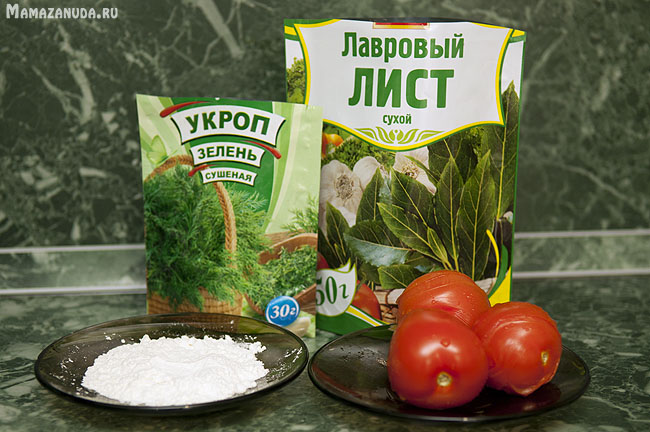 To maintain a viscous consistency of food in order to prevent digestive problems, sauces and gravies are indispensable. The technology for preparing children's sauces is different from the usual one - no frying and other procedures that enrich food with carcinogens.
To maintain a viscous consistency of food in order to prevent digestive problems, sauces and gravies are indispensable. The technology for preparing children's sauces is different from the usual one - no frying and other procedures that enrich food with carcinogens.
Ingredients:

Cooking:
- Remove skins from vegetables before chopping. To do this, heat treatment. I usually steam tomatoes and bell peppers for 10 minutes. After that, they are easily cleaned. Then, to obtain a puree, grind the vegetables with a blender.
- Mix flour with a little water. Rub thoroughly until the lumps disappear.
- Bring vegetable juice or puree with liquid to a boil. This is the base of the gravy.
- While constantly stirring the solution of water with flour (I like to stir with a whisk), pour it into the boiling base of the gravy.
- Add dill and bay leaf to the gravy and boil for another 10 minutes.
- If, despite all the tricks, lumps form in the gravy, we filter.
- Drizzle with butter, sour cream or cream and serve.
Gradually add flour and water to the tomato sauce, stirring constantly. |
Bell pepper sauce goes well with boiled chicken with rice. I added a teaspoon of lemon juice to the adult version of this sauce. |
Menu for a child from 1 year old | fish/meat/liver
Steam fish cakes
 These cutlets are distinguished by tenderness and a very successful flavor combination.
These cutlets are distinguished by tenderness and a very successful flavor combination.
Ingredients:
- 700 gr. (weight of thawed fish) - sole fillet;
- 350 gr carrots;
- 200 gr of bread.
Defrost the fillet, drain the water. We scroll all the ingredients in a meat grinder. Knead the minced meat - it should turn out  sticky and slightly viscous. If the minced meat is very thick and does not stick to your hands, then too much bread was added and the cutlets will not be so tender and tasty.
sticky and slightly viscous. If the minced meat is very thick and does not stick to your hands, then too much bread was added and the cutlets will not be so tender and tasty.
When forming cutlets, we moisten our hands with water so that the minced meat does not stick. Cook the formed cutlets for a couple of 25 minutes.
Serving:
Mashed potatoes or rice with steamed zucchini are ideal for a side dish.
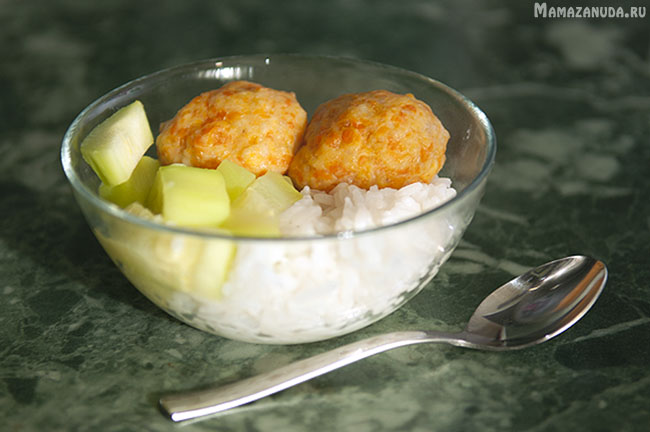
Turkey or chicken meatballs
As a rule, poultry meatballs, if you do not add more fatty minced meat, are dry and not tasty. Fatty meat is not recommended in the diet of babies, so I suggest you make meatballs with cabbage in gravy. 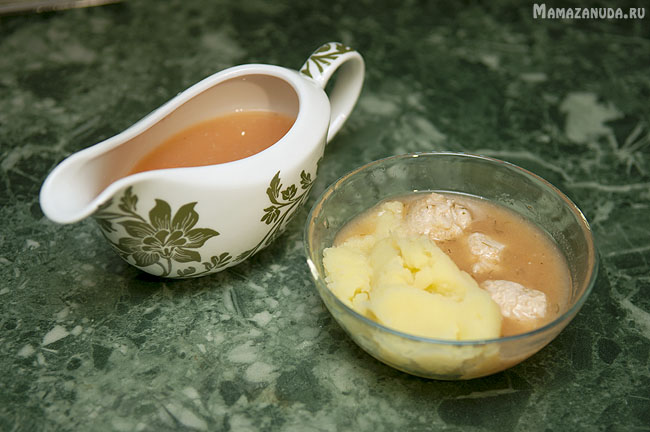
Ingredients:
- 500 gr. fillet;
- 250 gr. cabbage;
- small onion;
- gravy.
Cooking:
Fillet, cabbage and onions are passed through a meat grinder. We knead the mince. Gravy is ready. Minced meat is soft and does not hold its shape well when raw, so we immediately lower the formed balls into boiling gravy. Cook for 25 minutes. Serve ready-made meatballs with a side dish - I have mashed potatoes.
 Liver pate
Liver pate
Ingredients:
- 500 gr. chicken liver;
- 300 gr. carrots;
- small onion;
- Bay leaf.
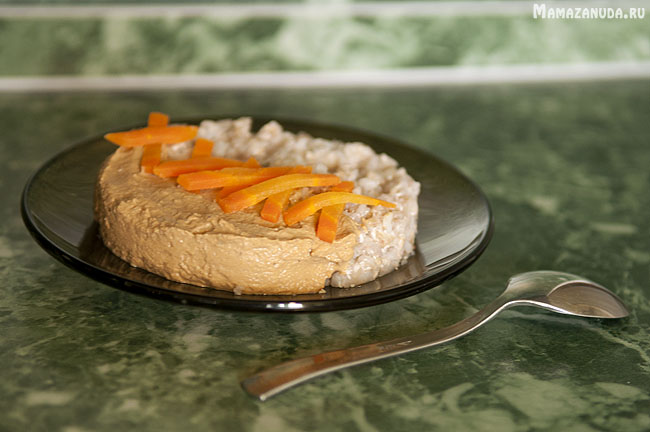 Cooking:
Cooking:
1. Boil the liver, carrots and onions. Carrots and onions can be steamed. The liver is better in water with the addition of bay leaf.
2. Grind the boiled ingredients into a puree.
3. By original recipe 50 g of butter should be added to the finished puree (I add 1 tsp of vegetable oil for 1 serving).
4. Serve with a side dish - this time I have buckwheat porridge.
This concludes the compilation, I hope you found interesting recipes and cooking methods in it! I will be glad if you share your hits.
A grown up baby has a sufficient set of teeth to switch to solid food. It's time to gradually replace semi-liquid meals with solid foods: whole cereals, potato casseroles and vegetables, stews and salads. Four meals a day. Most of the calories come from the lunch meal. The total energy value of the foods consumed by the child varies between 1350–1500 kcal.
Major dietary changes
The volume of dishes is slightly increased. If before the portions were very small, now they are 20–30 g more. Mom will no longer have to bother with grinding dishes, but she will have to be more careful when preparing salads and snacks. Menu planning tips:
- the baby is not yet ready for fried foods, but now he can be offered stew and liver, cut into small pieces;
- cereals and vegetables must be well boiled, not allowing them to remain half-cooked;
- dinner and breakfast should be from "light" dishes;
- fresh vegetables are required in the diet, mainly carrots and cabbage.
Particular attention should be paid to the intake of vitamins in the baby's body. Buy him a sufficient amount of fruit, keep in mind that they are healthier fresh.
What foods are needed for a child at 1.5 years old
As before, the child needs calcium. A significant proportion of his diet is milk- within 500–600 ml. To improve the taste, it is allowed to season the dishes with sour cream, but only in boiled form. The daily norm for a baby 1.5–2 years old is only 5 g. You should not exceed it, as this will negatively affect the functioning of the liver.
Almost every day, the baby needs meat- from 70 to 90 g. Preferably veal or turkey. Chicken fillet or rabbit meat is also suitable. Make sure that there are no veins in it - the baby is not yet able to chew them. Twice a week treat your baby with fish. He needs quite a bit - up to 30 g / serving. Make sure that the baby does not get bones.
Your baby has already grown up and now he needs more bread- up to 100 g per day. It can be given along with sandwiches or as a "companion" to first courses. The rate of potatoes has also increased - now it reaches 130-150 g / day. If on some day there are no potato dishes on the menu, do not worry, because these recommendations are indicative.
Every day the baby is recommended to give up to 150-200 g vegetables- zucchini, pumpkin, beets, carrots, kohlrabi and others. Absolutely all products are taken into account, including those coming with first courses or in the form of salads. Try to gently offer vegetables to your baby, even if he does not show much love for them.
A common mistake many parents make is egg abuse. You can often see mothers offering crumbs fried eggs or a large portion of an omelet. Please note that the daily norm for one and a half year old children is 0.5 eggs daily. This means that you can cook 3-4 eggs for your baby in a week.
Butter and vegetable oil are necessary for crumbs in a minimum amount. Alternatively, you can offer your baby a sandwich with cheese or jam. A serving of cottage cheese is now 50 g. It will taste better if seasoned with jam or sugar. Do not abuse salt - no need to accustom the baby with early childhood eat excessively salty foods.
It is quite understandable that parents want to offer their child sweets - kids get great pleasure from any sweets, cookies and cakes. But, believe me, this is not the kind of food that will make the baby happy. It is better to treat your daughter or son with fruits - they are just as tasty, but at the same time much healthier.
Menu for the week
We bring to your attention a menu option for the week. Dishes are selected simple, the preparation of which will require a minimum amount of time.
Monday:
- Breakfast. Buckwheat porridge with milk. Cocoa with milk. Sandwich with butter and cheese.
- Dinner. Cucumber salad with cottage cheese. Chicken soup with rice and broccoli. Rice porridge with meatballs. Tea.
- afternoon tea. Fruit salad with yogurt (bananas with strawberries and kiwi). Bun. Juice.
- Dinner. vegetable puree from chicken cutlet. Milk.
- Breakfast. Oatmeal milk porridge with raisins. Bread with butter and jam. Tea.
- Dinner. Salad of boiled beets with prunes. Pumpkin soup-puree with croutons. Mashed potatoes with stew and cabbage. Dried fruits compote.
- afternoon tea. Cottage cheese pudding with apples or cherries. Currant jelly. Bun.
- Dinner. Chicken liver with buckwheat. Tea with gingerbread.
- Breakfast. Wheat porridge in milk with wild berries. Apple juice. Biscuit.
- Dinner. Carrot salad. Borscht with beans. Vegetable puree with stewed fish. Cherry jelly.
- afternoon tea. Apple and apricot puree. Kefir with a bun.
- Dinner. Omelette. A cheese sandwich. Tea.
- Breakfast. Corn porridge(It is better to cook in a slow cooker). Bread with butter. Milk.
- Dinner. Beijing cabbage salad seasoned with lemon juice and herbs. Rice soup with meatballs, cauliflower and green peas. Spinach and broccoli puree with meat pudding. Dried fruits compote.
- afternoon tea. Cottage cheese with fresh fruit. Bun with kefir.
- Dinner. Vegetable puree with stewed rabbit meat.
- Breakfast. Pumpkin porridge with rice and milk, seasoned with raisins. Pie (baked) with liver pate and tea.
- Dinner. Salad with cucumbers and tomatoes (without peel). Chicken noodle soup. Rice porridge with fish cakes. Dried fruit compote and crackers.
- afternoon tea. Yogurt with cookies. Fruit juice.
- Dinner. Buckwheat porridge with stewed chicken liver. Tea with a sandwich.
- Breakfast. Millet milk porridge. A cheese sandwich. Cocoa with milk.
- Dinner. Cabbage salad with carrots and onions. Broccoli, cauliflower and spinach soup. Mashed potatoes with stewed veal and tomato sauce. Dried fruits compote.
- afternoon tea. Omelette. Oatmeal cookies with fruit juice.
- Dinner. Vegetable puree with stewed turkey. Tea with cookies.
Sunday:
- Breakfast. Oatmeal with banana and raisins. Cocoa with a bun and hard cheese.
- Dinner. Beet salad. Pea soup with crackers. Puree of spinach, broccoli, zucchini and cauliflower. Fruit juice with gingerbread.
- afternoon tea. Cottage cheese pudding with fruits. Cherry jelly.
- Dinner. Mashed potatoes with veal meatballs. A cheese sandwich. Tea.
Traditionally, the baby is supposed to have an evening portion of kefir. True, not all children are accustomed to this.
Baking in the diet of babies
Almost all children love cakes and pastries, but this does not mean that you can follow the child's lead. Industrially prepared products contain many additives: they contain thickeners, dyes, flavors and other ingredients that can harm the health of the baby. For this reason, it is always worth giving preference to the simplest cookie.
If you want to cook something for the crumbs with your own hands, you can bake cookies or gingerbread cookies with a minimum amount of eggs, fat and sugar. In no case should you use margarine - it is extremely harmful not only to children, but also to adults. We recommend replacing chicken eggs with quail eggs. Firstly, they do not cause allergies, and secondly, they contain a lot of useful substances. Instead of sugar, you can put fructose in the dough.
| 1st day |
|
Breakfast 8.00 (9.00)
Milk rice porridge - 200g, Tea with milk - 100 ml wheat - 10/20 g Lunch 12.00 (13.00)
Afternoon snack 16.00 Dinner 20.00 For the night 22.00 |
| 2nd day |
|
Breakfast 8.00 (9.00) Milk vermicelli - 150g Omelet - 50g Wheat bread - 10g Lunch 12.00 (13.00) Afternoon snack 16.00 Dinner 20.00 For the night 22.00 |
| 3rd day |
|
Breakfast 8.00 (9.00) Milk semolina porridge - 200g Tea with milk - 100ml Wheat bread with cheese - 20/10g Lunch 12.00 (13.00) Afternoon snack 16.00 Dinner 20.00 For the night 22.00 |
| 4th day |
|
Breakfast 8.00 (9.00) Liver pate with potatoes - 200g Coffee with milk - 100ml Wheat bread - 10g Lunch 12.00 (13.00)
Afternoon snack 16.00 Dinner 20.00 For the night 22.00 |
| 5th day |
|
Breakfast 8.00 (9.00) Omelet - 50g Buckwheat porridge - 150g Tea with milk - 100ml Wheat bread - 10g Lunch 12.00 (13.00) Afternoon snack 16.00 Dinner 20.00 For the night 22.00 |
| 6th day |
|
Breakfast 8.00 (9.00) Herring pate with potatoes - 50/150g Tea with sugar - 100ml Wheat bread - 10g Lunch 12.00 (13.00) Afternoon snack 16.00 Dinner 20.00 For the night 22.00 |
| 7th day |
|
Breakfast 8.00 (9.00) Oatmeal porridge with grated cheese - 200g Tea with milk - 100ml Wheat bread - 10g Lunch 12.00 (13.00) Afternoon snack 16.00 Dinner 20.00 For the night 22.00 |
Some food rules
1. The transition of the child to adult food should be gradual. Diet change is happening in the following way: to train the chewing apparatus, more dense and solid food is introduced, and liquid and semi-liquid are gradually reduced.
2. So that the baby does not turn away from a new dish, try resorting to simple rule: food should look attractive and smell delicious. It is the aroma and appearance"Goodies" start the process of producing gastric juice. By the way, bright dishes will serve as an excellent assistant in this matter.
3. During the meal, do not put all the cooked dishes in front of the baby, the baby should receive the next portion only when he has eaten the previous one.
4. Make at least one meal a family meal, even if the overall diet of the child does not match yours.
5. Gradually teach your child to set and clear the table. A three-year-old baby can already be asked to wash dishes for soy
After a year, most children already have 6-8 milk teeth, which means that it is time to introduce more solid food into the diet. When organizing the nutrition of a child from 1 year old, it is necessary to take into account his increasing needs for energy and vitamins. After all, in early age The child needs building material for his body. Yes, and the volume of the stomach of the crumbs has increased, the digestive capacity of the gastrointestinal tract has increased, the intestinal microflora is gradually returning to normal.
Of course, you do not need to introduce food in pieces right away. For example, from mashed potatoes and milk, you need to smoothly move on to puddings, casseroles and mousses.
One more important point: food prepared the day before loses most of its nutritional and useful properties, so you need to cook the child every day. Yes, this will take more time and effort than warming up a jar of baby food, but you are investing in the most precious thing you have - in children's health.
Milk and dairy products play an important role in the nutrition of children from 1 year old. As before, the diet of crumbs is based on them (taking into account all dishes, the consumption of dairy products should be 600 ml / day). If you stopped by the year breast-feeding, then mother's milk can be replaced with special milk formulas for children after a year. Children's curds, yogurts, kefirs will become relevant.
As for meat or fish, these products must be included in the daily diet of the baby. It is from them that the body receives the protein necessary for growth. Fish can be given 1-2 times a week, on other days - meat.
The source of vitamins and trace elements are fruits and vegetables, which can already be gradually given raw in the form of juices or salads.
An approximate set of products for one day for children 1-1.5 years old.
| Products | Unit. | Quantity |
| Milk | ml | 600 |
| Bread | G | 40 |
| Cereals, pasta | G | 20 |
| Potato | G | 100 |
| Vegetables are different | G | 150 |
| Fruit | G | 100 |
| Juices | ml | 100 |
| Meat | G | 60 |
| A fish | G | 25 |
| Cottage cheese | G | 50 |
| Yolk | PCS | 0,5 |
| Vegetable oil | G | 4 |
| Butter | G | 12 |
| Sugar | G | 40 |
| Salt | G | 3 |
How to make a diet?
It is necessary to draw up a menu for a child at 1 year old based on his needs: at the age of 1-1.5 years, a child needs only 1000-1200 g of food, and this is not counting liquid dishes (150-200 ml of juice, 300 ml of tea, 300 ml of milk) and soups are good for breakfast, especially with the addition of fruit or dried fruit. An ideal dish would be lazy dumplings, as well as any omelettes or salads with eggs. By the way, salads baby food you need to fill with sour cream or vegetable oil, not mayonnaise. In addition, they need to be cooked immediately before serving.If the child has any disorders in the work of the gastrointestinal tract, then the menu should include mashed soups, cream soups and puree soups. By the way, any soup for a child is cooked on the second, or even on the third broth. For meat dishes, lean meats are preferred: turkey, chicken, lean veal. For fish dishes, also use low-fat varieties: sea bass, cod, zander, hake. Canned food, marinades and smoked meats are not desirable in cooking for a child.
Now for the sweet. Of course, who doesn't love sweets? And as soon as the child turns one year old, some grandmothers strive to treat the crumbs to something delicious. Sweets become the subject of constant disputes in the family. In this matter, the main thing is to stand your ground. Namely, excess sugar can lead to the development of diseases such as diabetes and obesity. So even in ready-made dishes it is worth adding jam or jam, and less sugar.
You should also not overdo it by increasing the portions of the child. The entire required volume should be evenly divided during the day into 5-6 doses. If you reduce the number of meals by increasing portions, this can lead to indigestion and a deterioration in the appetite of the crumbs.
In this case, the qualitative composition of the diet should look something like this:
It is recommended to combine different kinds cereals with milk - milk soups, milk noodles. You can use special children's yogurt in the diet of children - it contains valuable components: protein, fat and calcium, necessary for the development of the child. You can add fresh fruits and berries to yogurt.


